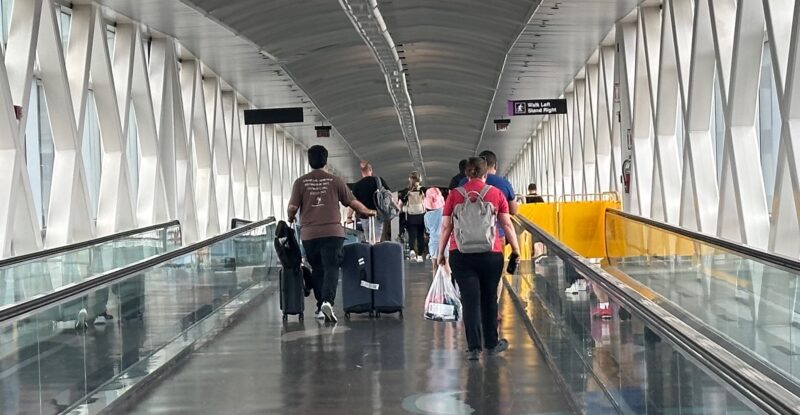The email arrived in my inbox at 8:30pm eastern time yesterday evening. “We regret to inform you that your flight has been cancelled due to operational reasons.”
By the early hours of this morning, it was abundantly clear that my cancelled flight was not an isolated incident. Nor too was it related to the usual suspects: mechanical problems, inclement weather, air traffic control delays or crew scheduling.
A line of broken code in the CrowdStrike update loaded to Microsoft’s Azure cloud system caused a massive global tech outage at airports, airlines, banks, media outlets, offices, retailers — even Starbucks.
For air travelers, the pain has been particularly acute, however.
According to aviation analytics company Cirium, as of 6am eastern, some 1,390 flights were cancelled globally, including 512 with origins in the United States — “significantly higher than usual at this point in the day”.
Within five hours, that figure had nearly tripled.
As of 3:30pm eastern today, there were 5,117 cancelled flights globally, representing 4.62% of flights, Cirium data show. A total 2,382 of these are in the United States, as several US operators requested FAA assistance with ground stops.
Only 47% of flights have departed on time today, says Cirium.
In a testament to the misery, travelers from around the globe shared photos of airport displays sporting the Windows ‘blue screen of death’, Microsoft’s signature error page.

By 3:30pm today, 2,382 flights had been cancelled in the US alone, representing 8.9% of scheduled flights, Cirium data show. Delta was particularly exposed, followed by United. Image: Cirium
Though delays and cancellations at some airlines are expected to smart throughout the rest of the day, and full schedule recovery could bleed into the weekend — leading to increased costs for businesses — credit rating and financial services firms do not see long-term pain.
“While the impact is acute in a number of sectors, we do not expect it to have a lasting effect. Therefore, from a credit perspective, we expect the disruption to have a limited impact across our rated universe,” says Morningstar DBRS managing director Elisabeth Rudman.
“However, we expect the incident to raise regulatory questions about the oligopolistic nature of critical IT infrastructure globally.”
In a statement this afternoon, Moody’s says: “The IT system incident that affected Microsoft’s Azure ecosystem will not have a lasting effect on airlines globally, nor their financial performance. Aggregate costs for the airlines will be measured in the tens to low hundreds of millions of dollars. This is relatively small compared to IATA’s forecast for $30.5 billion of net income in 2024 for the global industry.
“The timing of this morning’s incident could not have been worse, coming on a Friday morning in the Northern hemisphere summer, when daily traffic volumes are at their peak. The incident, caused by an external party rather than a misstep within an airline’s or air traffic control’s IT infrastructure, spotlights the fragility of today’s aviation system, both domestically and internationally.”
Moody’s notes, however, that “the interconnectedness needed to efficiently manage the vastness of the global airline industry is also its Achilles heel” given that a line of broken code can lead to such disarray.
The Air Current founder and editor Jon Ostrower says it plainly on X: “[W]hen airlines talk about a seamless global passenger experience, it means they all use a common IT system for key functions. The vulnerability (or lack of resilience) of that strategy is on full display here.”
In aviation, redundancy of aircraft systems serves as an essential safety net. There are no doubt lessons to be learned from today’s global tech outage.
Related Articles:












